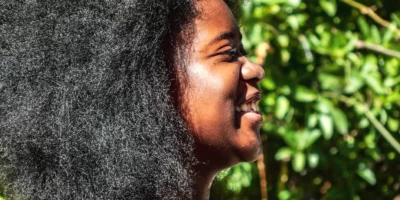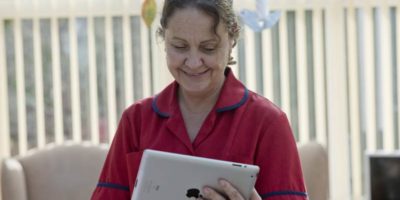Fran Sexton, from Ladder to the Moon – the creative culture change company cited in CQC reports as supporting organisations to achieve Outstanding – talks about how their Outstanding Activities program works and how homes can benefit.
To inspire and provide wellbeing for every individual in a care service takes leadership. Such leadership can come from anyone who steps up to motivate a group of people to a common goal.
I often hear people who work in care services say: “I just want the residents/patients/clients to be happy.” To achieve this goal we first need a clear idea about what we mean by ‘happiness’. Ladder to the Moon’s work is underpinned by Professor Martin Seligman’s Theory of Wellbeing, which identifies five essential elements to wellbeing: positive emotions, engagement, positive relationships, achievement and the opportunity to contribute to something greater than yourself.
For an individual in care to have personalised wellbeing – pleasure, engagement, accomplishment, relationships and an opportunity to contribute, all specifically catered to each individual – it takes a whole-service approach. Personalised wellbeing for every individual in a care service cannot be the sole responsibility of a single brilliant activity coordinator or even a complete social engagement team. If we want all those living in care, with all their diverse needs, to experience personalised wellbeing, then the whole service needs to feel inspired and empowered to contribute to that goal.
And to motivate people towards that common goal takes leadership.

When Milton Ernest Hall first joined Ladder to the Moon’s Outstanding Activities programme, their deputy manager Heather Donnell attended the quarterly development days and monthly coaching calls. Heather had the clear backing from her manager to enrol and involve all of Milton Ernest Hall’s staff in social engagement. The home also had the endorsement of Majesticare’s head of operations and head of memory and lifestyle care. Due to Majesticare’s unity of vision and communication, Heather was empowered to lead.
We started out our work by sending a selection of creative ‘resource boxes’ to the care home. These boxes, designed to be a part of an activities session and organised around a specific theme, are visual and tactile, have things to pass around and handle, topics and ideas to discuss and suggestions for next steps and further activities and tasks. The ideas and activities generated from working with these boxes are long-lasting and transformative.
The first creative resource box we shared with Milton Earnest inspired apprehension, but also curiosity and engagement: “We have thoroughly enjoyed this box,” Heather reported. “The passion from everybody has been amazing. All this apprehension, and yet everybody in the home has got involved. It’s just been amazing. It inspired everybody.”
Before the end of their first year with us, Heather had handed responsibility for the creative resource boxes over to one of her activity coordinators, Lindsey Salhotra. This wasn’t about passing over the responsibility to deliver everything herself, but giving Lindsey the responsibility to lead, to inspire and enthuse others – residents, staff, family, visitors – to participate and connect.

Using the ‘Snug n Cosy’ box, they began by consulting residents, sharing the box and theme and, with a huge piece of paper across the living room, collected what makes everyone feel snug and cosy. They then turned the sheet of paper over, and generated ideas for activities and further tasks. Some of the things inspired by the collaborative work on this box were:
- A snug corner was created in the home, with a fireplace, rug, books, blankets and candles.
- A book club began: a consultation session with residents and family members led to the selection of a book and a resident’s daughter volunteered to read the book. The club was advertised and the first reading held in the cosy corner around the fire. The volunteer enjoyed herself so much shed booked in two more sessions before the end of the day! A resident who had been withdrawing from social contact, ‘conscious of her speech and its deterioration … believing that people could not understand her or want to communicate with her’, got involved and even made membership cards. “It was great to see her out of her room and in the small cosy space with other residents, where she seemed more comfortable,” says Lindsey. The book club is now a regular event at Milton Ernest.
- A hot chocolate bar was also created. “We ran it like a help-yourself cafe and we used it as a big conversation starter,” says Lindsey. “It drew people out of their rooms to investigate, and it led to residents, staff and relatives all sitting, chatting and laughing about the sickly combinations they could come up with! There was not a single drop left by the end of the morning and some individuals who often leave their drinks half-full were found to have drunk two full cups. The hot chocolate bar has now been incorporated into a regular breakfast club. The transformation in the home this month has been amazing,” says Lindsey.
To create a climate where inspiration is welcome, ideas blossom, creative change occurs and as a result individuals and communities flourish takes leadership. Developing and supporting leadership in senior management and in staff is the key to a whole-service approach and to increased wellbeing across a service.




